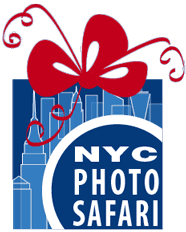Camera Tip #43: Justification for a New Lens

One of the most common questions during a Photo Safari is “what lens should I buy next?” . The problem is this: if you own more than one lens you almost never have the right lens on your camera. So unless you are committed to changing lenses often, the kit lens is probably good enough for the vast majority of things you need to photograph. But if you are itching to buy a new lens, especially with the holidays approaching and you want to make sure Santa brings you the right lens, here are some things to consider. Note: Everything is with respect to a full frame sensor. If you are shooting with a smaller sensor, please divide the focal length by your frame factor.
16-36mm - Good for photographing vast open landscapes or large spaces in close proximity and where you cannot move back (ie. Interior architecture)
14mm, 20mm, 24mm (f/2.0 or faster) - If you are photographing vast open landscapes or large spaces in close proximity and cannot move back (ie. Interior architecture) and are shooting in low light conditions where speed is necessary or a tripod is unavailable.
35mm, 50mm (f/1.8 or faster) - If you find yourself needing a little bit more focal length than above and will be shooting in low light and cannot use a tripod and speed/low ISO is important, these lenses will help (help - not fix, this will not fix all your low light problems). Caveat NOT a lot of zoom or wide.
85mm - Please note that a 85mm lens is not a “portrait” lens. If you need a lot of speed and sharpness but a 50mm lens is just a little bit too short, then an 85mm will do. These lenses can be very sharp and under a f/1.8 can give you a very shallow depth of field. This would bode well for photographing pets or children at a moderate distance without having to be on the moon or too close either. However some of these lenses have a very limited close focusing range. If you are photographing small flowers this would be a bad choice.
50mm, 100mm, 105mm macro - Macro lenses allow users to fill the frame up with an object the size of a US quarter coin; that is an object that is 1 inch (25mm) wide. When considering the choice between a 50mm and a 100mm consider that you will have to be twice as far from the subject with a 100mm lens than you do a 50mm to get the same subject to fill the frame. It may be a benefit as it allows space for you to add light or to hold up props or fill cards etc. Also a 105mm lens is classically considered a “portrait” lens, so a 100mm macro lens would serve a dual purpose. This lens would also be very useful if you are shooting indoor sports in a small arena (emphasis – small). Also note that not all 50mm and 100mm qualify as “macro” lenses.
200mm+ - If you are photographing outdoor sports, or sports in a large arena, or wildlife you will need more focal length. At 200mm you would be able to photograph large animals in a zoo where there is a barrier between you and the animal. For something like an African safari or perhaps a surfing event, you will need to get over 400mm.
70-200mm - This long zoom lens gives you a nice range in which to be photographing everything from portraits to sporting events. It is just enough zoom for most medium distance subjects. However if you are in the back row of a large stadium you will need more focal length. If you have court side seats at a basket ball game it will serve you very well.
24-70mm - Often called a walk around lens. This zoom lens offers a reasonable amount of wide angle for those great architectural shots and allows you just enough zoom so that if you are doing any street photography you can zoom in on that person without getting too up close and personal, however if you wanted to the 24mm is great.











